In This Issue
The opinions, beliefs and viewpoints expressed in this publication are those of the authors. They do not necessarily reflect the opinions, beliefs, viewpoints or official policies of Autism Society Alberta. |
|
|
Supporting Autistic People in the Workplace
Maureen Bennie

From the Autism Awareness Centre Inc. Blog
Having a secure job improves a person’s quality of life, self-esteem, and well-being. Employment can add meaning and focus to the day, build skills, create a wider circle of support, and the opportunity for human connections, friendships, and feeling a part of something.
The reality is that the ASD (Autism Spectrum Disorder) population continues to be chronically underemployed, or not employed at all. In 2019, according to the US Bureau of Labor Statistics, 19.3 percent of  persons with a disability were employed, compared with 66.3 percent of those without a disability. The unemployment rate for people with ASD continues to hover at around 80%. The Canadian Centre for Policy Alternatives in 2018 stated that Canadians with “mild” disabilities are most likely to find employment, and their unemployment rate is 35%. For those with “severe” disabilities, the rate jumps to 74%. According to the 2017 Canadian Survey on Disability, the employment rate for autistic adults is 33 percent, compared to 79 percent for the general population. persons with a disability were employed, compared with 66.3 percent of those without a disability. The unemployment rate for people with ASD continues to hover at around 80%. The Canadian Centre for Policy Alternatives in 2018 stated that Canadians with “mild” disabilities are most likely to find employment, and their unemployment rate is 35%. For those with “severe” disabilities, the rate jumps to 74%. According to the 2017 Canadian Survey on Disability, the employment rate for autistic adults is 33 percent, compared to 79 percent for the general population.
The United Nations marks April 2nd as World Autism Awareness Day. Every year, they devote the day to a topic that concerns autistic people. In 2015, the United Nations website stated that approximately 80% of autistic adults are unemployed. There are a number of barriers that keep this statistic so high, such as a shortage of job training programs, inadequate support for job placement, a lack of supports/accommodations in the workplace, and pervasive discrimination.
In April 2021, the UN’s focus of this day was on inclusion in the workplace. They also spoke about the impact COVID-19 has had on employment for autistic people:
“The COVID-19 pandemic has exposed and heightened glaring inequalities around the world, especially when it comes to income and wealth distribution, access to health care, protection under the law, and political inclusion. Persons with autism have long faced many of these inequalities, which have only been further exacerbated by the pandemic. It’s a problem made worse by long recognized discriminatory hiring practices and workplace environments that present major obstacles for persons with autism; all of which contribute to the unemployment or severe underemployment of a large majority of adults on the autism spectrum.”
But a positive thing has happened too, in that new ways of working, including remote working and the use of new technologies, have created opportunities for autistic employees that previously found it difficult to thrive in traditional workplace environments. However, as we move back to in-person physical workspaces, there will be a period of anxious transition and adjustment after having worked from home for almost two years.
Autistic individuals can bring a lot to a job such as dependability, reliability, concentration, memory skills, attention to detail and accuracy, and factual knowledge, just to name a few. Every person is unique with their own talents, abilities, and interests. We need to find the right supports and a structured environment to nurture these capabilities. They also tend to stay in the same area and not move once they have established themselves.
What can we do to support autistic people in the workplace?
- Predictability – Knowing what’s going to happen lessens anxiety; the autistic brain is not a predictive one. Give the agenda ahead of time, the plan for the day, and/or the plan for the week.
- Establish Routines – Routines provide structure, order, time management, and the concept of time.
- Visual Supports– Provide visual reminders of task breakdown, procedures, rules, and policies.
- Sensory Accommodations – Examples of sensory accommodations are soft lighting, quiet spaces, and a scent-free environment. Blocking out background noise can be difficult
 (background music playing while someone is talking, people talking in groups so a person can’t focus on a solo speaker, noisy workspaces). A person in sensory overload can end up melting down, tuning out, or shutting down. Movement/body breaks are really important throughout the day. (background music playing while someone is talking, people talking in groups so a person can’t focus on a solo speaker, noisy workspaces). A person in sensory overload can end up melting down, tuning out, or shutting down. Movement/body breaks are really important throughout the day.
- Clear Expectations – Autistic people will not pick up on hidden meanings/curriculum, read between the lines, may not see the next steps in a task that you may think is obvious, and may not know how to start a task (especially if it is new), may not understand idiomatic expressions, and may take what is said literally.
- Auditory Processing – Auditory processing tends to be weaker than visual processing, hence the need for visual supports. If instructions are given verbally, the first part may be retained or only the last part of what was said.
- More Response Time is Needed – Because of delays in auditory processing, a person may need more time to respond verbally. Allow 5 seconds or more before repeating instructions, because if a person jumps in too soon, the autistic person has to start processing from the beginning again.
- Communication Style/Speech – This will vary for individuals – eye contact may be difficult, processing time slower (this has nothing to do with intelligence), they may interrupt, differences with voice prosody (inflection/tone), and there may be pronoun confusion or verb tense errors. A person may not have good social filters and comment inappropriately. Small talk is often challenging.
- Novelty is Anxiety Provoking – Experiencing a new situation, learning a new task, or adjusting to changes in the workplace is anxiety-provoking. Changes will happen, but the more preparation that can be given, the better. If several new things are going to happen, try introducing them in small increments.
- Teach New Skills Using Video Modeling – Using video technology for modeling takes visuals to the next level, by combining the visual supports strategy with technology to create an even more effective teaching tool. Video technology is readily accessible (through iPhones and iPads), easy to use, and inexpensive. Videos can also provide predictability, and give the viewer control over the speed, repetition and volume of what they’re watching. More about this here.
Recognizing Anxiety is #1!
Understanding signs of anxiety is the most important thing in the workplace, because if left unchecked, it can result in meltdowns, conflict, shutdowns, or outbursts.
Signs of Anxiety
- Reduced eye contact
- Can’t sit still
- Appearing zoned out
- May become echolalic (repeating what you are saying)
- May snap at something small
- May need more reassurance
- May want to leave early or leave the area
- Physical signs like stomach ache, rapid breathing, sweating, increased heart rate
- Increase in stimming behaviors such as fast, intense rocking, pacing, self-talk, hair twirling, and hand flapping.
- Sensory avoidance (hand on ears, closing eyes, retreating somewhere)
- Sensory seeking behavior (bumping into furniture, getting into a small, tight space)
- Increase in repetitive behaviors such as touching the same objects over and over
- Self-injurious behaviors like head banging or skin picking/pinching.
Some of these behaviors may be an attempt at self-calming, while others may be signs of anxiousness or feeling upset.
What are some calming strategies in the workplace?
- Offer an escape plan – a quiet space to retreat to for a few minutes.
- Do some deep breathing – A new anxiety study showed we are less aware of our breathing as anxiety increases.
- Take a little walk around the building – a movement break.
- Distract – sometimes talking about an interest or favorite thing can be calming.
- Stop talking.
- Allow for personal space – a minimum distance of 3 ft.
- If the person is upset, remove the other people around them if possible.
- Listen to what is bothering them. What might not be a big deal to us is huge to them.

Supports and accommodations in the workplace can make all the difference in an autistic person being able to retain their job. With employment being an important part of well-being and adding to the quality of life, employers need to be part of the movement to change the current unemployment statistic for this population.
|
|
|
Counselling Services at Autism Calgary
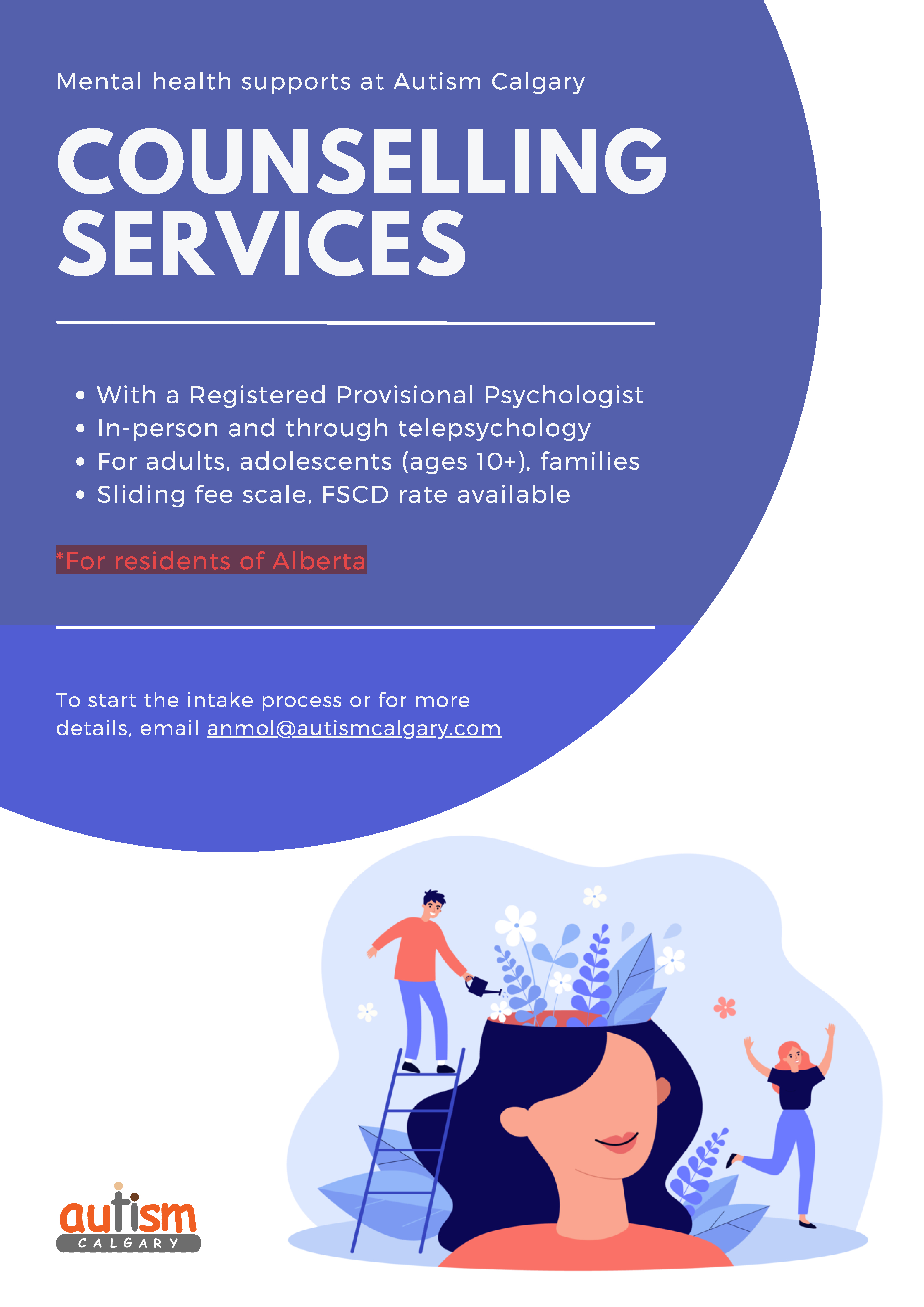
To start the intake process or for more details, email anmol@autismcalgary.com
|
|
|
Cycle for Autism Edmonton

Go to Autism Edmonton’s website to find out more information about this super-fun event!
|
|
|
Task Analysis Pt.1
Carmen Moore
This month, I will introduce a series on the evidence-based practice (EBP) of ‘task analysis.’ Check out my past articles outlining many of the other EBPs for more ideas on how these can work in conjunction with task analysis. Much of the information in this article is from the related AFIRM online module, found here.
Task analysis is the work of breaking down complex skills into smaller, more manageable steps. Once the skill is broken into steps, adults/support people can help the learner master the individual steps, and then chain the smaller steps together to acquire the target skill or behaviour. Learners with Autism Spectrum Disorder can often struggle with attaining new skills, especially if they are complex or have many steps. We will use the term ‘chaining’ throughout this series, and that will be explored in more detail. One great part of this strategy is that it is typically cost-effective, requires minimal resources, and can be used across multiple settings. Doesn’t that sound great?
What kinds of goals can task analysis help to address? It can help to address many different things:
- self-help skills:teeth brushing, washing hands properly, etc.
- enhance language and communication skills:asking for help, having a
 conversation, ordering a pizza, etc. conversation, ordering a pizza, etc.
- increase motor skills: riding a bicycle, swimming, playing catch, etc.
- increase academic skills: completing a multi-step assignment, math operations, reading text, etc.
- increase adaptive skills: making a sandwich, doing the laundry, grocery shopping, etc.
This is just an introductory list of short and long-term goals that can be addressed using task analysis.
There are actually three different but related task analysis procedures that we will discuss in this series. These are:
- Forward Chaining
- Backward Chaining
- Total Task Presentation
Forward chaining is the process of looking at a multi-step task, breaking it into very specific steps, and then teaching/practicing the very first step in particular. Once that step is mastered, then teach/practice the next step, and so on until the entire task is mastered. By breaking it down into more specific and manageable steps, it is much easier to tackle, lowering anxiety and keeping the learner from feeling overwhelmed. The image below demonstrates how to break the task down into steps. Begin with just turning the tap on, then applying soap, washing hands, turning off the water, and lastly drying hands. It may take some practice to break down the tasks, as we take many of the steps for granted.
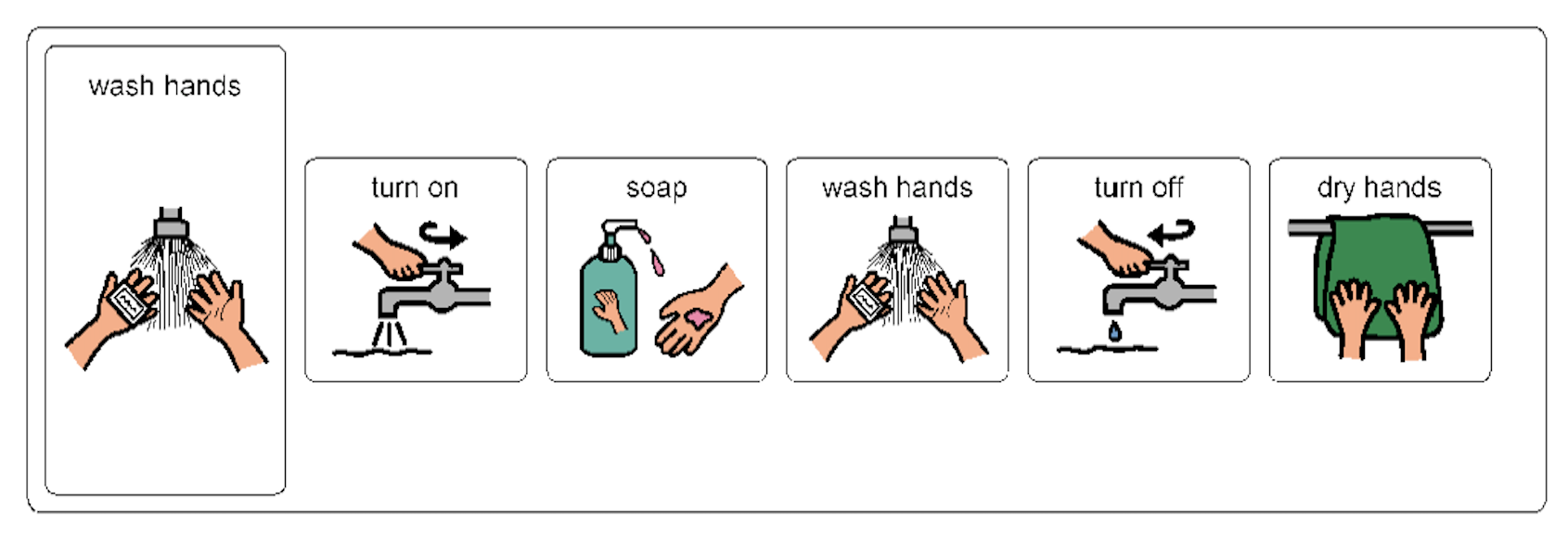
Backward chaining is very similar, in that you break the task into distinct steps, but you begin with the last step to try independently. In the washing hands example, you would prompt and support the first steps and then begin independency at the last step of dry hands. Once that step is mastered, have the learner practice/do the last two steps independently, then the last three, and so on. I personally have used backward chaining when teaching my own child to get dressed independently. I helped him with the whole process of getting dressed except for the last sock, which we started him doing on his own. Then both socks. Then pants and both socks, etc. until we were at the beginning of the task, and he was able to get dressed independently. Once a goal has been met, move to another goal/task to accomplish.

The third way to perform this strategy is total task presentation. To do this, have the learner perform the entire chain of tasks with reinforcement, encouragement, and feedback at each step. Give your most effective reinforcement at the very end of the task, at full completion. In the example of washing hands properly, the learner would be prompted, reinforced (even just with verbal praise), and celebrated after each step of the hand-washing is completed. When I supported my son in learning to make a grilled cheese sandwich, I used this strategy by prompting and supporting each step, until he was able to do it all himself. Prompting, fading prompts, reinforcers, and even visuals can be effective supports in implementing the total task presentation.
This EBP has worked for me both personally and professionally many times. It may seem like a lot of front-end work, but it has definitely paid off in spades for the learners that have gone through the process from start to finish. I hope that it can work for you and any learner that tries this from start to finish.
|
|
|
CASE Golf Tournament

Calling all Golfers!
The Maier Centre for Autism Charity Golf Tournament, in support of Children’s Autism Services of Edmonton, will be held on June 10th, 2022 at the Quarry Edmonton Golf Club. The demand for services continues to rise and your support makes an important difference in the autism community. Funds raised will go towards critical respite for families and summer camps. For more information and to register visit Maier Golf.
|
|
|
Opportunities
Terri Robson
What don’t you see in me
Is it the magic, the wonder I see every day
Why don’t you see my talents, my gifts,
My everyday quirks
I too can do what you do
But it may be done differently
Different doesn’t mean wrong
It means not the same
Your talents and gifts are different than mine
They are what make you unique
Yet the world welcomes many of you
With open arms, open doors,
Open opportunities
Why then are those openings closed to others like me
I do not want to change, I only want to be me
Please give me the same opportunities
You’ll see who I can be

Terri Robson is an autistic woman and owner of Awkward Spirit. She is also on the editorial board of the Canadian Journal of Autism Equity.
|
|
|
Centre for Autism Services Alberta
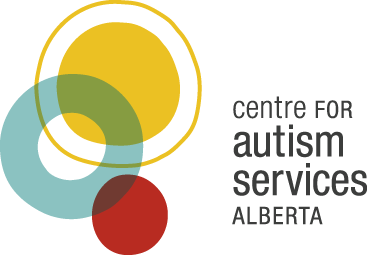
Spring is here and summer is on the way! The Centre for Autism Services Alberta has lots of exciting things coming up!
The annual Centre for Autism Services Alberta Art Show and Sale is back!!
Participants from our Fun with Art (ages 7-12), Exploring Art (ages 13-17), and Creative Expression (ages 18-27) programs, in partnership with the Nina Haggerty Centre for the Arts, will be presenting a show of their work. This show encompasses participant art from our fall, winter, and spring sessions. All Art on display is for sale. All proceeds from pieces sold go to the artists. The show runs from June 11 to July 2, 2022.
Join us for the opening reception on Saturday, June 11 | 12:00 pm – 3:00 pm at the Stollery Gallery, Nina Haggerty Centre for the Arts, 9225 – 118 Ave NW, Edmonton
We’ve got Summer Camps for children and teens with ASD, ages 3-17 years old!
Learning new skills, having fun, making friends, and creating summertime memories in a safe, supportive environment – that’s what our summer camps are all about. Centre summer camps are designed for all kids with autism, regardless of the impact of their diagnosis. All camps are supervised by Centre-trained aides and employ a high staff-to-camper ratio. Each week of camp for all age groups has a different, super fun theme to choose from!
Registration is now open for:
We are accepting applications for ‘Facing Your Fears’ for September 2022.
This program is for ages 8-12 and is designed for children on the autism spectrum who are having difficulties managing their anxiety. A well-developed caregiver education component is part of the program, allowing strategies learned in groups to be implemented at home. This 13-week program consists of 90-minute sessions, once per week, and…
- Focuses on helping children and their caregivers identify worries, develop coping strategies, and practice managing anxiety with guidance from program facilitators
- Caregiver participation is required
- Delivered by a registered psychologist and occupational therapist
- Funding may be provided by FSCD
- For more information and to apply, please contact Anne Beattie at 780-488-6600 ext. 314, or email abeattie@centreforautismab.ca
Fall 2022 Registration for Preschool & Kindergarten
Did you know that the Centre for Autism Services Alberta in Edmonton offers onsite preschool and kindergarten PUF programs? We offer specialized programs dedicated to children with developmental disabilities, and our programs use play as a foundation for learning! Program applications are currently being accepted for fall 2022. Fall programming will take place onsite at our NEW location! 9353-50 Street NW.
For info on eligibility, and to apply, email Joanne at puf@centreforautismab.ca or call 780-488-6600. For general information on our PUF programs, please visit the PUF page on our website here.
Thinking about getting a job?
Our EmploymentWorks program offers employment readiness training and job sampling work experience for individuals with a disability, including but not limited to Autism Spectrum Disorder. In addition to our EmploymentWorks program for adults (ages 18 - 64), we are now offering EmploymentWorks in select high schools around Edmonton, as well as condensed summer programming for high school students. To inquire and to register, send us an email at Employment Works. Start your job search today!
|
|
|
Life With a Dual Diagnosis
Stephanie Williams
I’m a mom to the most amazing, brilliant, funny, energetic 12-year-old boy named Tye. Tye has a dual diagnosis of Autism Spectrum Disorder and Attention Deficit Hyperactivity Disorder. ASD and ADHD are both types of neurodiversity. This is our story.
From a very early age, I knew Tye was different. He hardly slept (15 minutes at a time), never stopped moving (walking at 10 months), and was talking at an early age. As a result, my son was diagnosed with both ASD and ADHD at the age of 2.5 years old. We went through a multi-disciplinary clinic that involved a pediatrician, an occupational therapist, a physical therapist, a speech pathologist, a psychologist and an adolescent psychiatrist. The final diagnosis was made by the psychiatrist after input from the team, his preschool teachers, and our close family and friends.
So, what does this look like? Well, full disclosure; this is what it looks like for our family. Every family and every neurodivergent person is different, but this has been our experience:
- Sleep is a struggle. Tye used to sleep in 15-minute intervals a few times a day. Now at age 12, he sleeps 4 to 6 hours on a typical night. This is with medication.
- He still doesn’t stop moving. We made the choice to switch to online learning through the Hub this year, which allows him to create his ideal environment in his bedroom for learning. This means while he’s "in class" he’s pacing, lifting weights, running through his karate kata, or just swiveling in his chair. While this may seem chaotic to some, this actually allows him to be able to focus better on his academics, and his marks have skyrocketed since we made this change.
- Moving brings us to sports! Tye prefers individual sports, but that hasn’t limited our options! He takes trampoline lessons twice a week through our local gymnastics club,
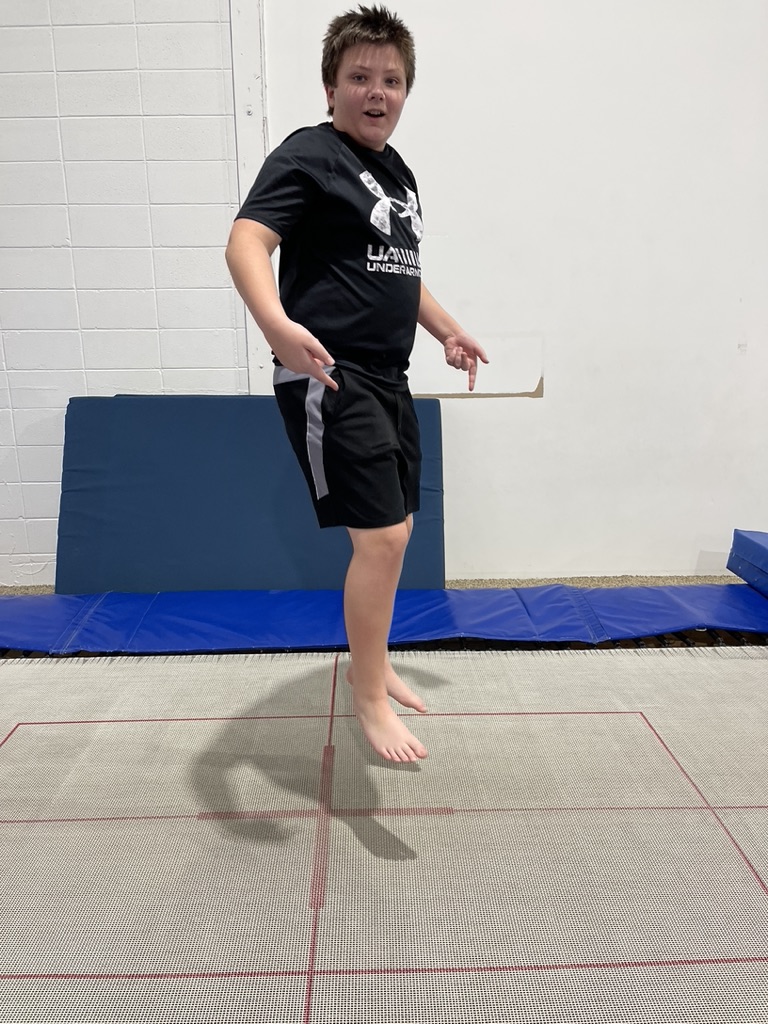 golfs, swims, and used to take karate lessons. He has also recently joined our local YMCA and taken up weight lifting. Moving his body is key, as it helps to keep him regulated. golfs, swims, and used to take karate lessons. He has also recently joined our local YMCA and taken up weight lifting. Moving his body is key, as it helps to keep him regulated.
- But what does he eat to keep up with all that moving? Tye is considered a problem eater (think picky but more extreme). He limits foods he eats to those that are taupe in colour (something I never clued into until his OT pointed it out). Ideally, he would love to live off of bread and cheese (wouldn’t we all), but through working with his team we have been able to expand his menu to include apples, bananas, and mushrooms (yup, they’re taupe). Stil, in total, he probably eats less than 10 different foods.
- Yes, he can focus. In fact, he can hyperfocus on preferred interests. From coding to gaming to playing with his collection of Rubik’s cubes, he can go into such an intense level of concentration that he loses all track of time. There have been several occasions when I’ve told him I’m leaving the house to run errands, only to have him call me to find out where I am; or times when he is surprised to hear me return, not even noticing I’d actually left. Alarms and timers are our friends in this household, to warn of upcoming events and transitions.
- This brings us to routines. We have calendars everywhere! We have one hanging on the family bulletin board, a weekly one on the fridge, a family one synched across our iPhones, and a daily checklist posted on his bedroom door. Tye thrives on routine, and on knowing what to expect. While his flexibility has definitely improved over the years (in the past we couldn’t even switch grocery stores once we had said where we were going), impromptu changes are still not his favourite thing.
- Tye is a multi-tasking master! Tye runs a minimum of two screens on his desk for his computer and frequently is also seen with his iPhone running something on the side. He listens to music, while he watches a video while he types out an assignment for school. This system works for him (for the most part), and is another reason an alternative learning environment has been so great for him.

- Reminders, reminders, reminders. This has been a learning curve for me. I initially struggled with having to repeat myself constantly. Then I had my “aha moment”, if you will. I realized he was processing information differently, and that if I presented it differently, there would be far less frustration on both our parts. Now we use lists (on our phones and on paper), alarms (thank you Google minis), and still some verbal reminders from mom and dad (and sister). Executive Function (EF) is something that will always be a challenge, but we have all found great coping mechanisms, and work closely with his psychologist to continue to improve his EF and support him.
This has been just a smattering of our life, but I think you get the idea. We have far more successes than struggles these days, but that doesn’t mean that we all don’t work hard; most of all Tye. Over the years we’ve been so lucky to have such an amazing team of individuals to support Tye and our family. Currently, we only access a psychologist, but she’s amazing, and Tye sees her every other week to work on things like impulse control, reading and recognizing emotions, insight, executive functioning, phobias and anxiety, gaining independence and more. I can’t say enough about how amazing it is to have her on our team.
Every day is an adventure. Sometimes the ADHD characteristics are more prominent, sometimes the ASD ones are, and sometimes it’s a mix of both. Regardless, Tye’s neurodivergence is what makes him who he is, and we wouldn’t have it any other way.
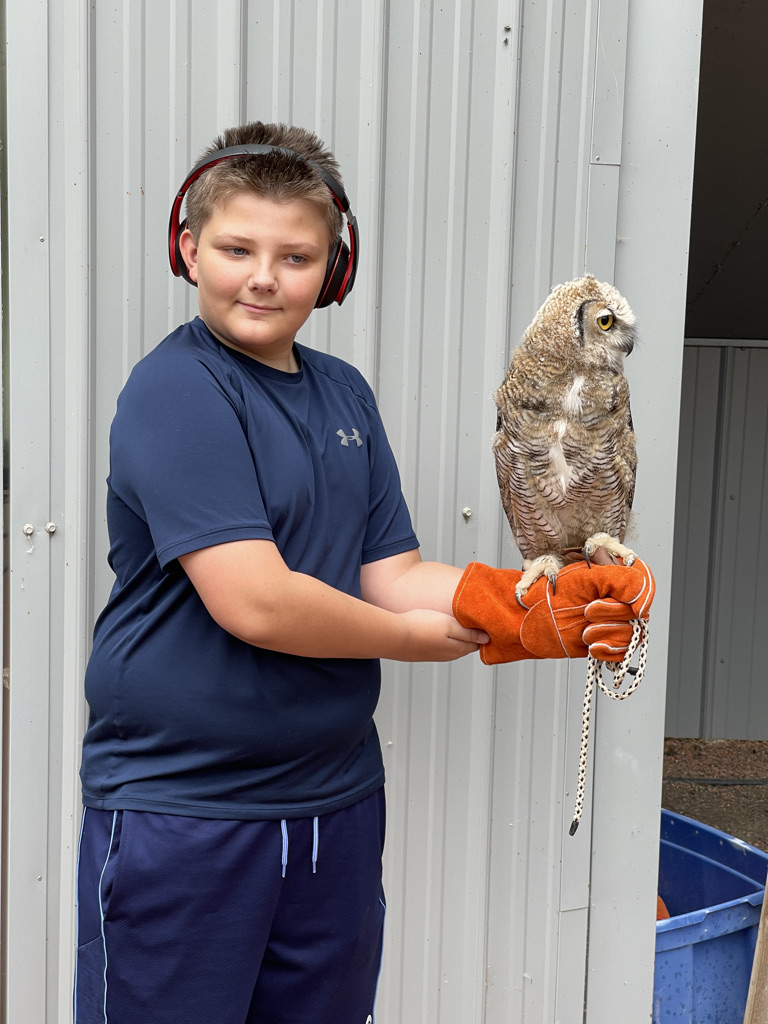
The image below is courtesy of Dr. Neff of Neurodivergent Insights.
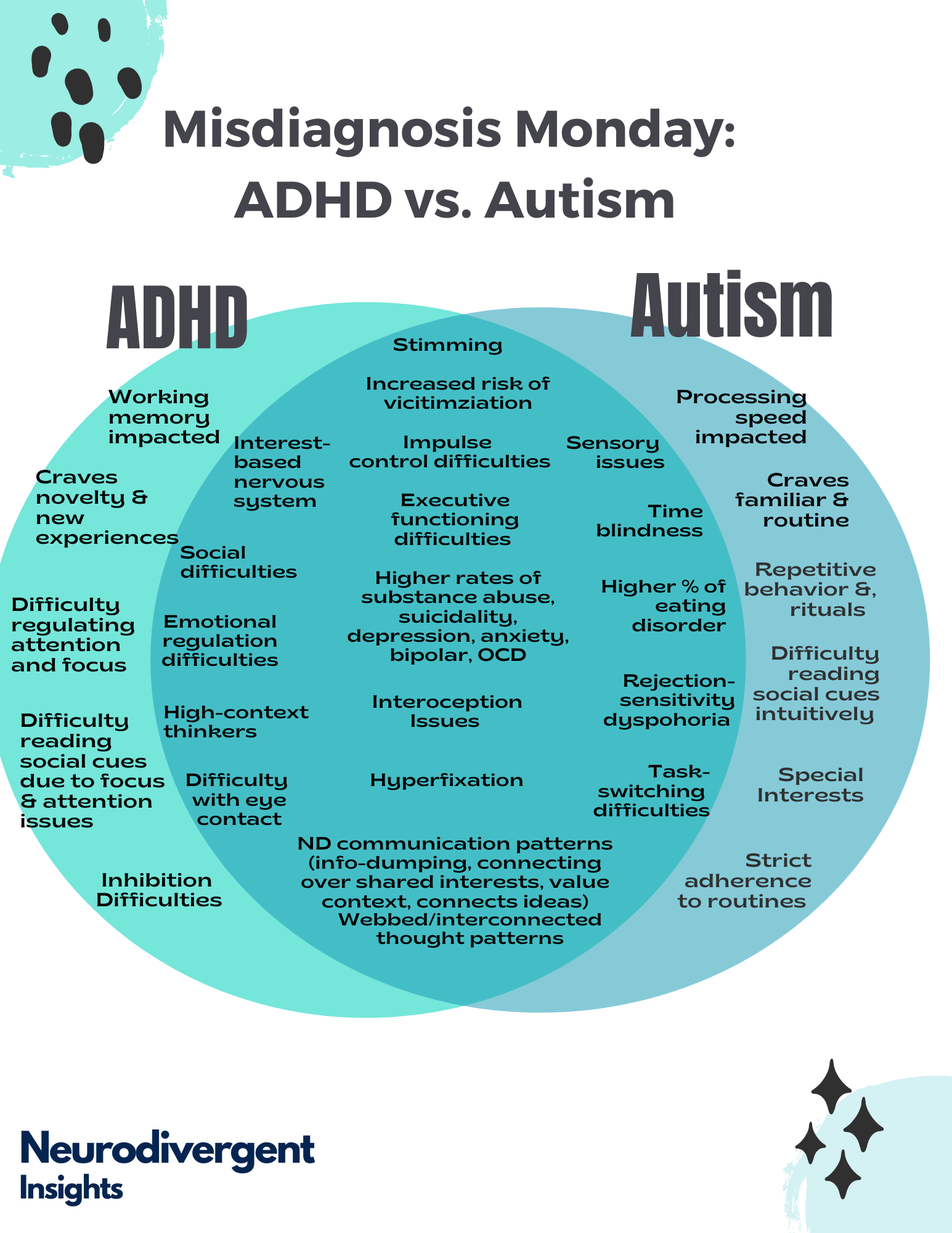
|
|
|
Meet ASA’s Family Resource Coordinators

Hello! My name is Amanda Downey, and I am the Family Resource Coordinator for the
Fort McMurray and Wood Buffalo regions. I've lived here much of my life. My husband and I have three teenagers ranging from ages 15-19 years old. I have one son on the autism spectrum. He also has epilepsy and attention-deficit/hyperactivity disorder (ADHD). I have a daughter who has Smith-Magenis Syndrome, a rare genetic disorder. All in all, it's a busy life and I have lots of experience navigating the system. I enjoy getting to know other families who live with disabilities and would be happy to help in any way I can.
|
|
|
Santa Fun Run

Saturday June 25th celebrates 'halfway to Christmas' in
Ft. McMurray!
Christmas in June!!! Open to all ages and abilities, this inclusive Fun Run has a 5k Fun Run or 1k Santa Dash option! This event is a fundraiser for our youth social-respite program. All funds raised will go directly to support program activities.
Click here and scroll down to register. For questions or problems registering please email: programdirector@autismrmwb.org or call/text 780-531-5777

|
|
|
Different Perspectives
Karla Power
As parents of two children on the autism spectrum, we are used to having different perspectives from other parents. We are able to recognize how our kids are similar to their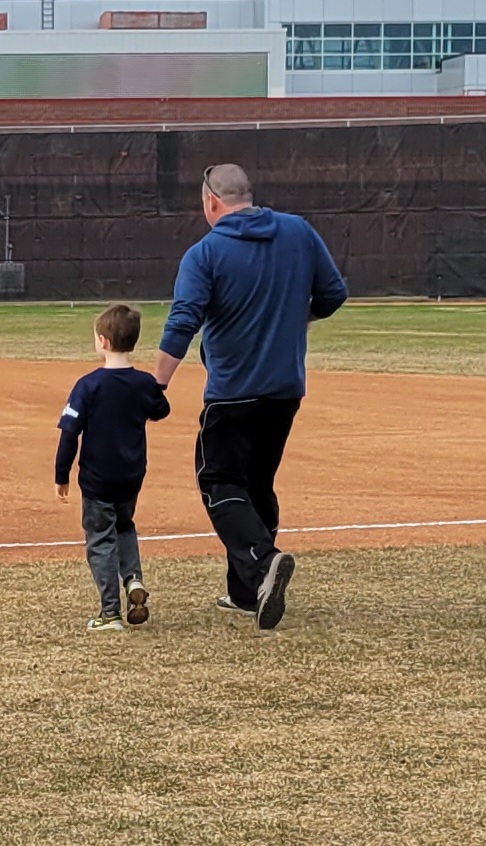 peers (they are active, enjoy TV, and think snacks are better than meals). Their differences from their peers are also very apparent to us, which is sometimes a hard pill to swallow. We can’t predict the future, but we are aware of the current gaps. We don’t necessarily understand the perspective of being a parent of neurotypical kids (since we have never raised one), and those parents likely will not be able to understand our perspective either. peers (they are active, enjoy TV, and think snacks are better than meals). Their differences from their peers are also very apparent to us, which is sometimes a hard pill to swallow. We can’t predict the future, but we are aware of the current gaps. We don’t necessarily understand the perspective of being a parent of neurotypical kids (since we have never raised one), and those parents likely will not be able to understand our perspective either.
I recently had a parent of neurotypical children tell me “kids are all the same”. I wanted so badly to agree with her, because to a certain extent, I wish that to be true. However, I’m guessing it doesn’t take two people to get her kids’ nails cut, that she is probably able to sit down and chat with other parents at the park, and that her kids are able to tell her how they are feeling.
I also doubt that she celebrates victories like drinking from an open cup at the age of 6, her 3-year-old learning to communicate using a device, or even both of her kids looking at the camera so she can get a picture of them. Perhaps it is not the kids that are so different, but the parenting experience. Either way, I would argue that no kids are the same, whether they are neurotypical or not. We are all individuals, and need to respect each other’s differences.
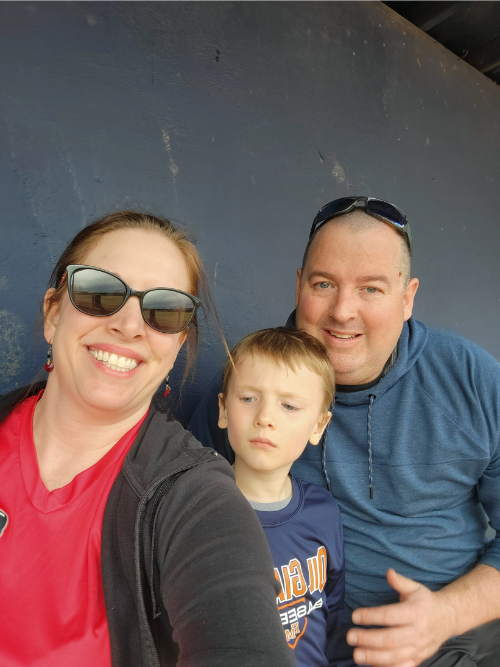 Even those who you might expect to have similar perspectives could have very different reactions or feelings about the same experience. Recently, we participated in opening ceremonies for Paddy’s baseball team. We decided to sign him up for challenger ball this year, to try out a team sport for the first time. We went as a family to the opening ceremonies, and even had backup for Kelton so we could both support Paddy and get a few pictures at the same time. Even those who you might expect to have similar perspectives could have very different reactions or feelings about the same experience. Recently, we participated in opening ceremonies for Paddy’s baseball team. We decided to sign him up for challenger ball this year, to try out a team sport for the first time. We went as a family to the opening ceremonies, and even had backup for Kelton so we could both support Paddy and get a few pictures at the same time.
Afterward, I was so elated by the experience! I loved seeing Paddy in his uniform (even though he didn’t want to wear the hat), walking hand in hand out onto the field with his Dad. He stayed on the field for 30 whole minutes, surrounded by players and parents, with very little protest. We of course had brought snacks and shows to help entertain him.
On the way home, I began looking through the pictures and talking to my husband about how nice it was. When we got home and put the boys to bed, I noticed Frank seemed quiet. When I asked him what was going on he said “that was a lot”. To which I replied, “yeah, there were a lot of kids there.”
When I stopped talking and really listened, I heard what Frank was trying to say. He explained that he thought it would just be us and kids like ours, and that seeing the other players was hard for him. Although we are both super grateful to the people who organize special needs sports in town, he knew it would be different. The other teams came out in full uniform, without most of their parents, ready for a season where they would compete and have fun.
For my husband, seeing those players was particularly difficult because he is a sports guy, and grew up playing sports with his dad, so that was his dream for our boys. We don’t know what the future will hold, but I get why he felt sad. I am the same way when it comes to Christmas concerts. I always want my boys to participate in whatever way they can, but as a music teacher, it hurts to know that they may never “sing” with their peers. Christmas concerts. I always want my boys to participate in whatever way they can, but as a music teacher, it hurts to know that they may never “sing” with their peers.
Having that talk with Frank really put things into perspective for me. Even though we are both raising the boys together, our parenting experiences and perspectives can be very different at times. One thing is for sure though, we will always do what is best for the boys and keep giving them experiences, even if that may look or feel different for us, because we love them.
|
|
|
#ExperienceAutism
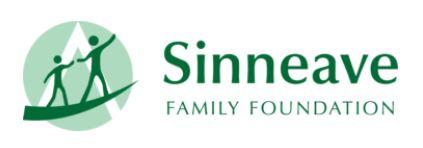
#ExperienceAutism is an innovative, free-of-charge service that offers a facilitated conversation for employers, post-secondary educators, and landlords interested in learning more about supporting positive interactions with people on the autism spectrum. To find out more click here.
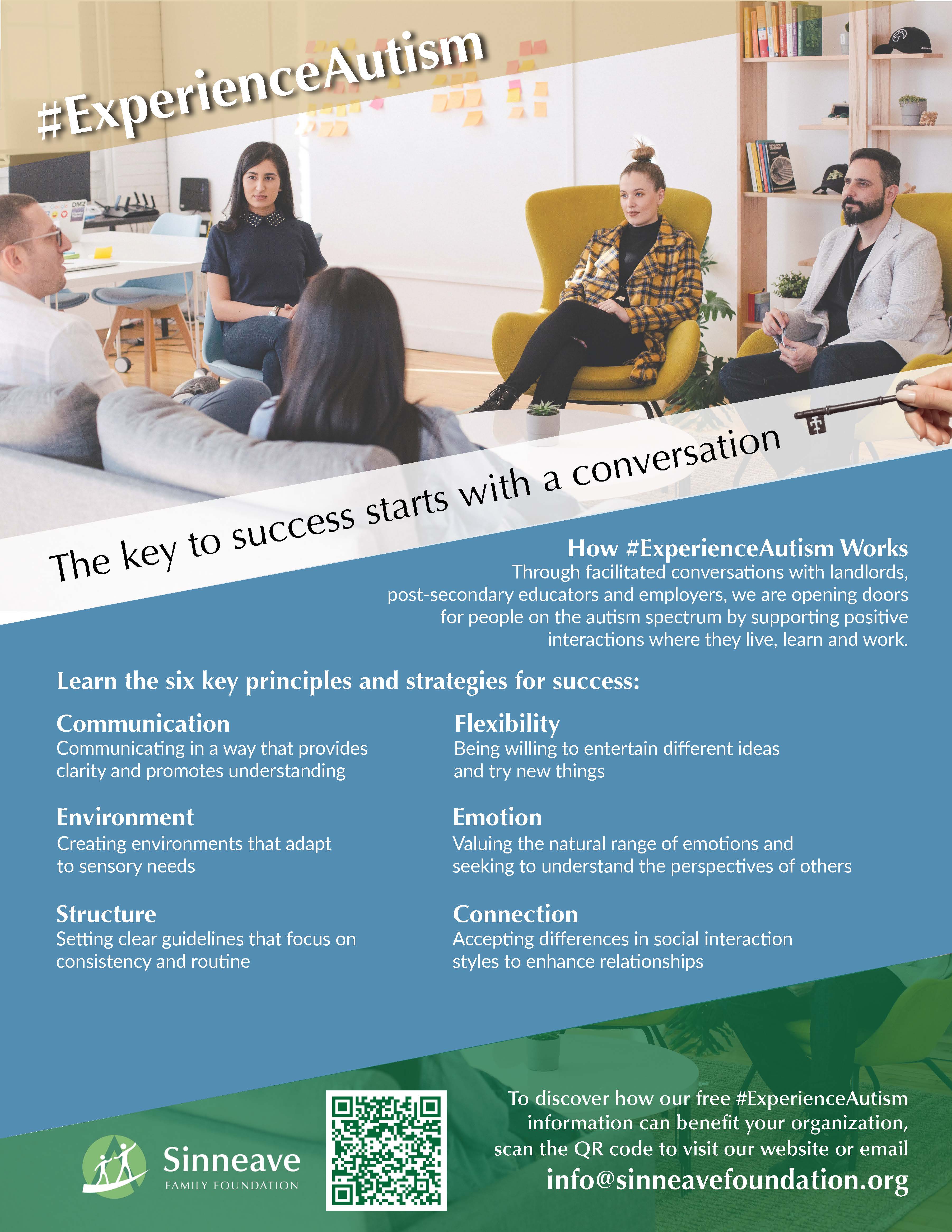
|
|
|
|
|